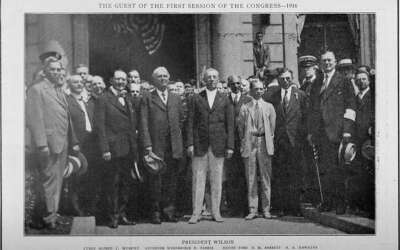Negotiating a Pilot / Proof of Concept
When I’m teaching a negotiation workshop, there are certain things that really fire me up. There seems to be a moment when one of my rants goes a bit crazy (I need to work on that). I had another one yesterday. The subject? Negotiating a pilot / Proof of Concept (PoC).
Disclaimer: This rant is directed more at the companies whose solutions require resources to implement. For companies whose “pilot” does not require resources and is the solution itself, you may be a PLG (Product-Led-Growth) company, where only part of my rant applies.
So your prospect wants to do a pilot.
First, let’s think about the why. Why do they want to do a PoC?
- Your competitor is offering a pilot: Might your customer be thinking that your competitor must be awfully confident in their solution, so you’d look weak if you didn’t, too?
- They have a short-term need: Is it because they want to extract as much value as possible from your solution for free, then never convert? Maybe.
- They can’t decide: They’re torn. In most cases, it’s because they’re having trouble predicting. Their brains aren’t able to trigger a decision based on the evidence before them, and the feelings they’ve established for their choices.
In all three cases, there’s a problem, right?
Here’s the thing. Do they really want to do a pilot? I mean, if my outcomes really mattered, doing a pilot with a vendor or two pushes that off too, right?
We don’t buy when we’re “convinced”, we buy when we can predict
Putting issue #2 above aside for a moment, if we’re being asked for a pilot, we missed something early. That may sound like a Captain Obvious answer when you really think about it, but imagine this:
You’re engaged with two vendors. Vendor #1 is pitching why they are the better solution, and why Vendor #2 is not. Vendor #2 is pitching why they are the better solution, and why Vendor #1 is not. Which one is right? Nobody is differentiated. You don’t trust either one. You have to see for yourself. Thus, “We need to do a pilot first.”
When shopping for something online, why do you read the reviews? And, why do you skip the 5-star reviews and read the 4s, 3s, 2s, and 1s first? Because you’re trying to predict. What could go wrong? What am I not going to like? I don’t more “perfect” speak. I need to PREDICT.
By “we missed something early”, it means we haven’t helped our buyer predict. Embrace transparency early. You read the negative reviews first, right? It’s the basis for my book, The Transparency Sale, but when we lead with what we give up to be great at our core, when we lead with why another solution may be better in certain cases, when we set expectations around both the pros AND THE CONS, we help our prospects predict. We differentiate in the way we sell. We build trust. But the magic? We speed sales cycles, increase win rates, qualify IN faster, and qualify OUT faster the deals we should lose anyway. And, we make it really difficult for our competitors to message against us.
More information available to prospects hasn’t made it easier on them – it’s made it harder! Pilots are a way for a prospect to find the truth, but (a) it rarely does, (b) it hurts you and your company.
Trust. Transparency.
What Now – The Two Steps
So, that ship has sailed, eh? Or, they’re asking for a pilot anyway. What do you do…
Step one, assess your situation.
If you are a startup with few clients, or you’re trying to open a new vertical, market, or offering, you may have to do them. I totally get that. Keep reading.
If you’re an established company, with established solutions for companies in the prospect’s vertical/geo/use case? Well, here’s where I went a little overboard yesterday. I said, “f&ck your pilots”. Then I apologized. But here’s why:
a) A free pilot that requires your resources?
My take? I never wanted to use my best resources on uncommitted clients. My best resources were to spend their time on my clients who are committed – they deserve it more. And, they’re the ones who stay, buy more, advocate, and drive your profitability! Confidence is contagious. Be confident.
“Where are you stuck? A request for a pilot typically comes from an inability to predict – and that’s on us. We haven’t helped you predict.” Then, do the homework. What do you give up to be great at your core? Share it. Go to Google and write in “(your company name) reviews”. Read them. determine what’s true and what isn’t. Present that to the client. Go to ChatGPT and type in “Why shouldn’t I choose (our company/solution) for my organization?” What does it say? What’s true? What isn’t? Present it. Connect those clients to references who are willing to share both the pros AND THE CONS. Be a resource for your customer. Do the homework for them.
HELP THEM PREDICT!
Tell the client that we reserve our best resources for our committed clients. Don’t be afraid. That should and better be the truth!
b) A free pilot that requires no resources?
Well, you may be in the category of companies that can do it – the PLG (product-led growth) category. If the pilot experience is low-touch, true-to-life, the conversion rate is high, and the risk of a terrible experience is low (i.e., doesn’t create piles of negative reviews), then have at it!
Step two, charge them for it!
A paid pilot is just a short-term commitment. Price it that way. If your solution is subscription based, a core element of which your product is priced and your company is valued is based on the commitment to your products, technology or services. Your pricing is based on a commitment, right? It probably requires a minimum commitment period of at least a year.
“Our pricing is based on a commitment to our solutions over a period of time. The longer you commit to our (products/technology/services), the better that is for us, and we pay you for that commitment in the price. If you want to do a pilot, you can, but the price for a short-term agreement is considerably higher than one that has said commitment.”
Then, remind them that there are protections in the contract for underperformance: “Remember, the agreement has termination provisions, including ‘termination for cause’ and ‘warranty’ that protects you if the solutions don’t do what’s promised.”
And, that’s not just highly resourced pilots. You’ll notice for just about every PLG company, they offer better pricing for a term commitment than they do a month-to-month. Even for my little company, I’m paying for a full-year commitment from all of them – Mailchimp, Zoom, Calendly, etc., when I could theoretically go month-to-month. Treat your pilots like that! But, if your solutions require resources, you better make the pilot at least 30% higher than the commitment.
The CRO (Chief Revenue Officer) of the company I taught yesterday was in the room for my rant. He chimed in following to say that their win rates on opportunities that have a pilot is considerably less than those which don’t have a pilot – all the way down to 17%. They’re not profitable.
When you’re confident enough to present the truth, to be an advocate for your customer, trust is built. When you’re willing to explain that your best resources are reserved for your paying clients, they get it. When you’re willing to risk having a prospect do a pilot with a competitor but not you, that’s confidence.
Confidence is contagious. Help the prospect predict. Embrace transparency.

I speak and teach revenue organizations on how to leverage transparency and decision science to maximize their revenue capacity. It’s what I do…teach sellers, their leaders, and really entire revenue organizations the how we as human beings make decisions, then how to use that knowledge for good (not evil) in their messaging (informal and formal), negotiations and revenue leadership. I wrote a 3x award-winning book (𝘛𝘩𝘦 𝘛𝘳𝘢𝘯𝘴𝘱𝘢𝘳𝘦𝘯𝘤𝘺 𝘚𝘢𝘭𝘦), and have a newish book out (𝘛𝘩𝘦 𝘛𝘳𝘢𝘯𝘴𝘱𝘢𝘳𝘦𝘯𝘵 𝘚𝘢𝘭𝘦𝘴 𝘓𝘦𝘢𝘥𝘦𝘳) now that just won its first award!
Reach out if you want to discuss The Transparency Sale sales methodology, or really…anything else (sales kickoffs, workshops, keynotes, the economy, history, etc.)! Email info@toddcaponi.com or call 847-999-0420.
Sign up for the newsletter for more of my nonsense in your inbox every other week, with some sales history sprinkled on top…Sign Up – The Transparent Newsletter





0 Comments